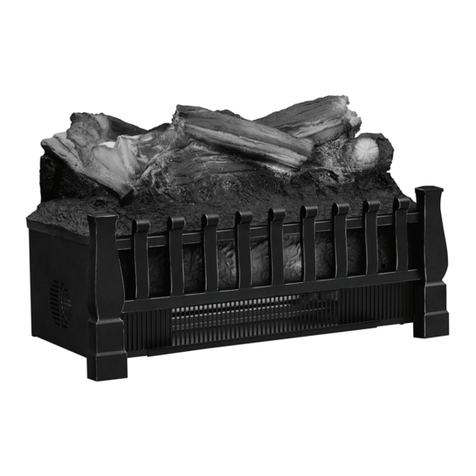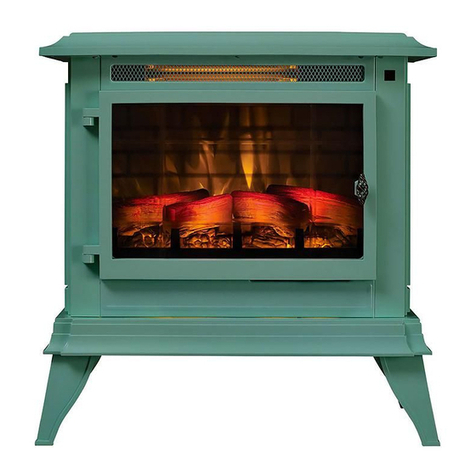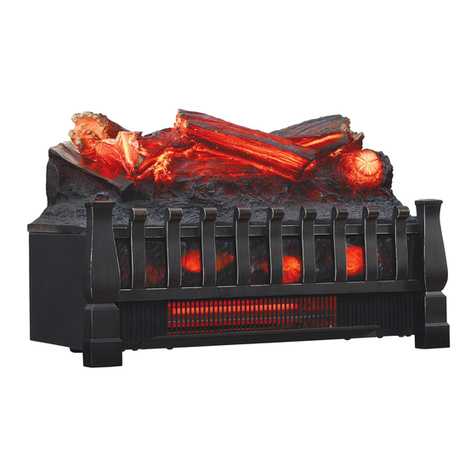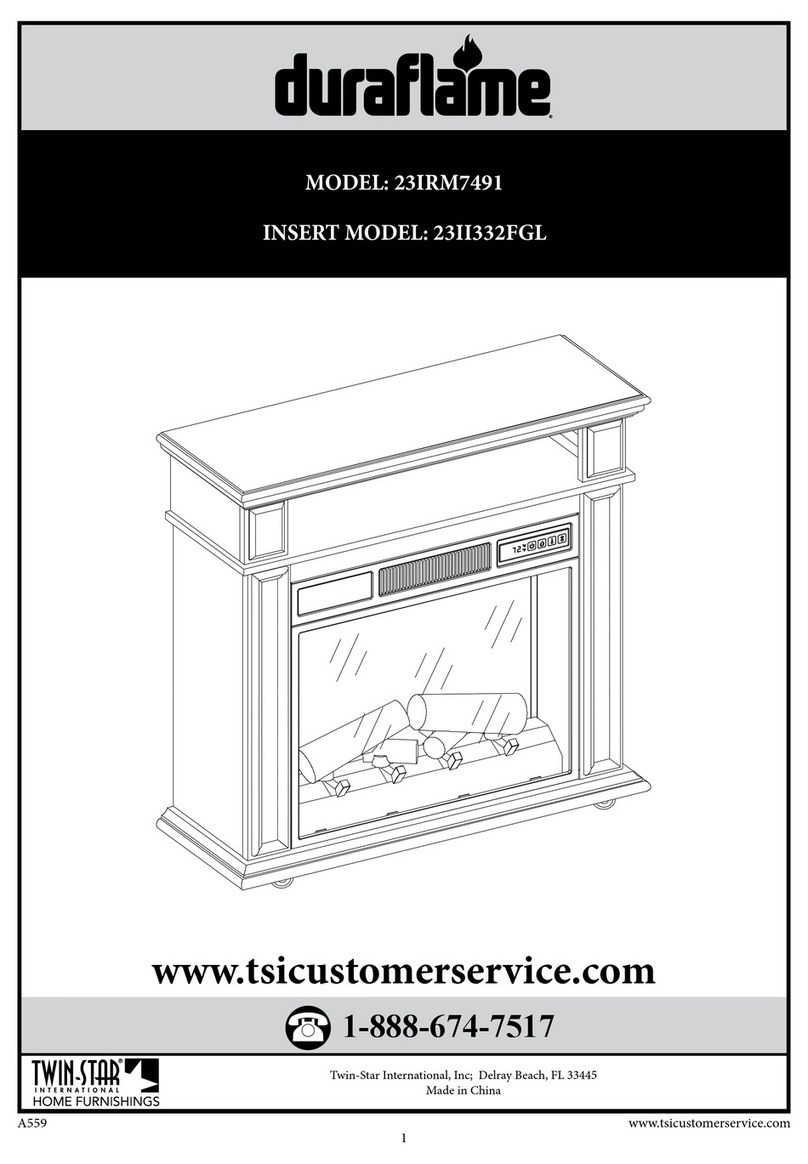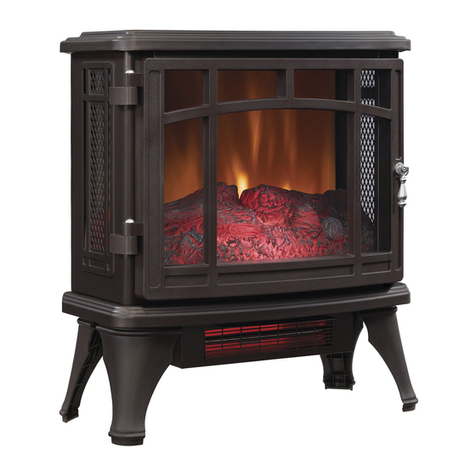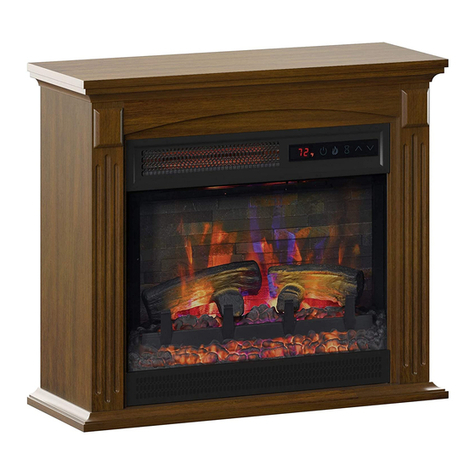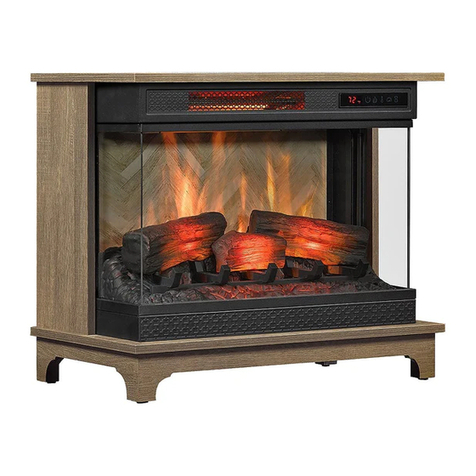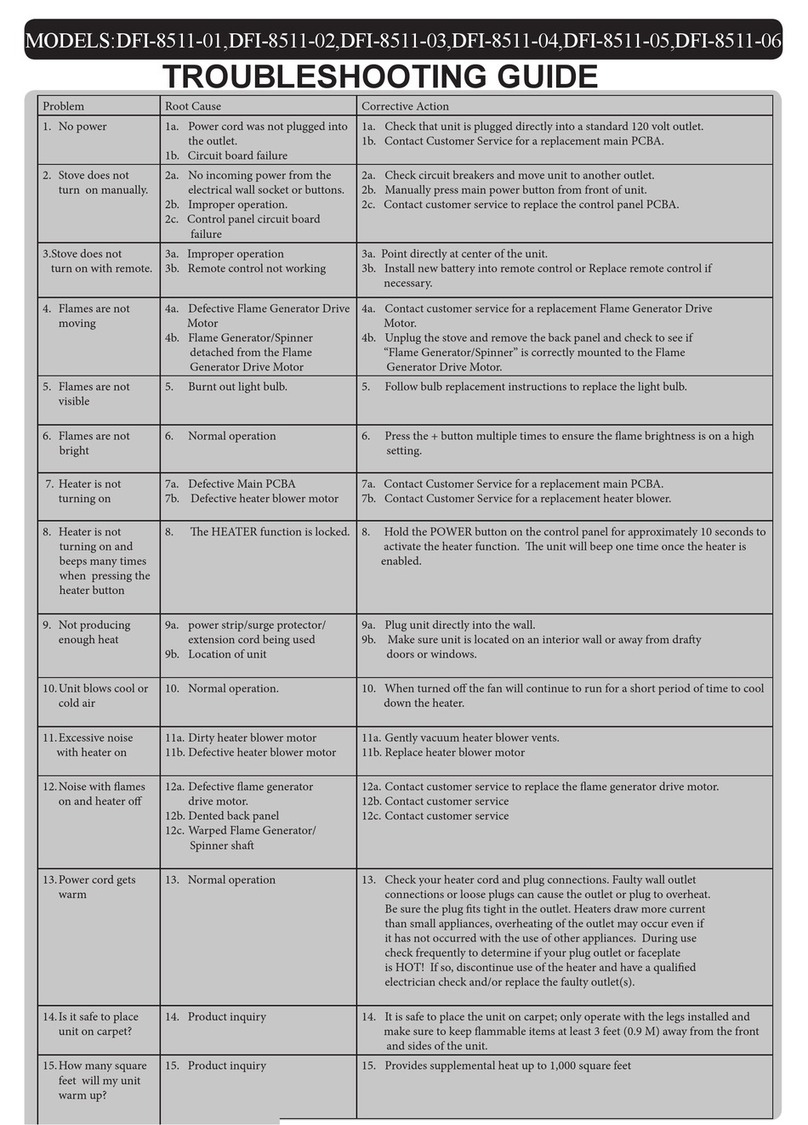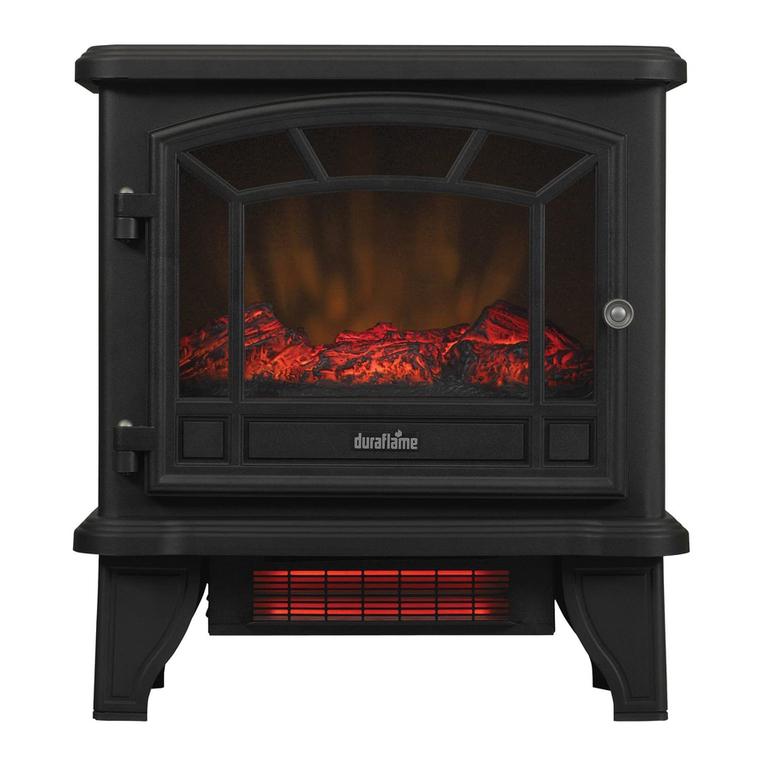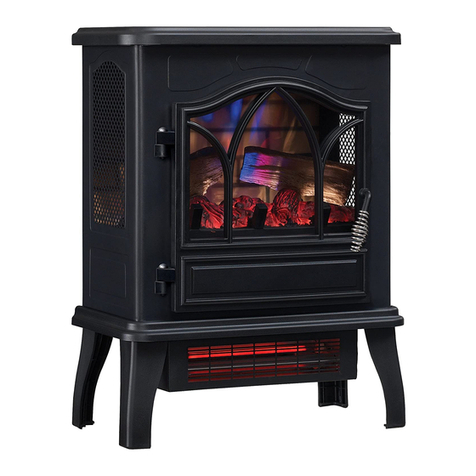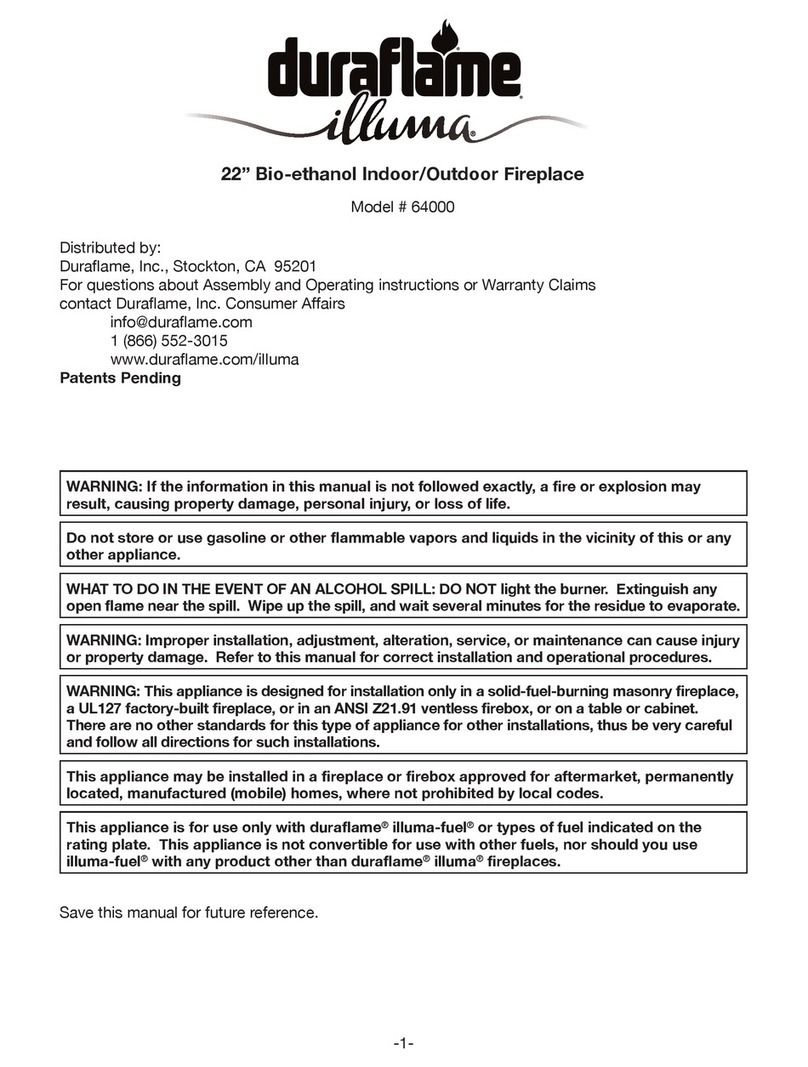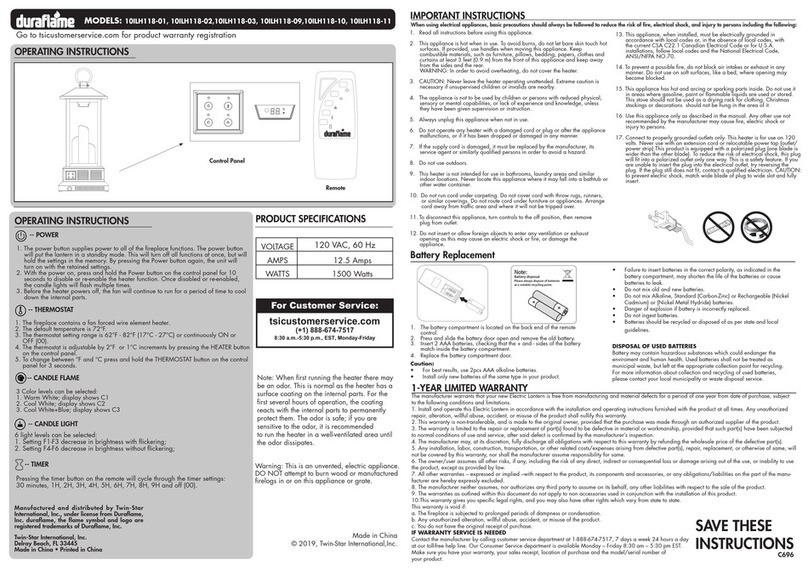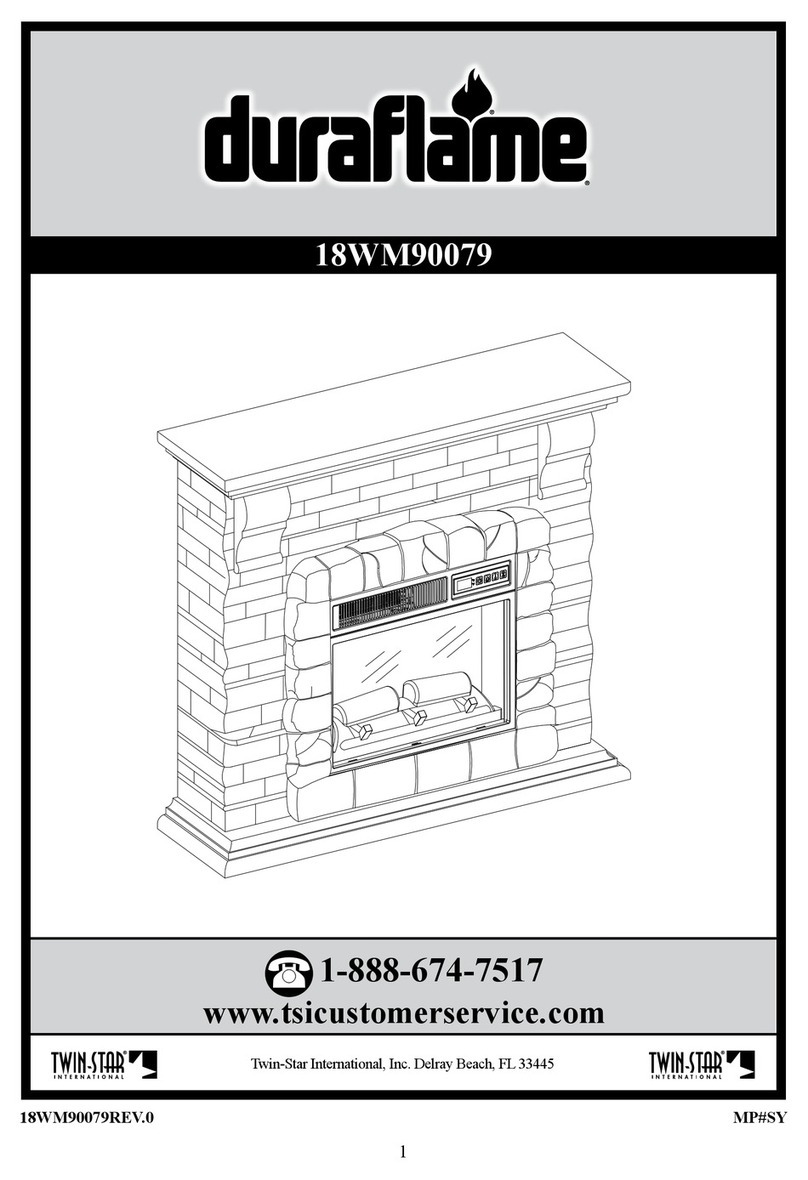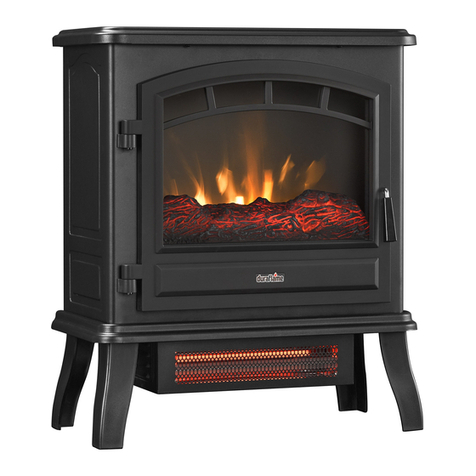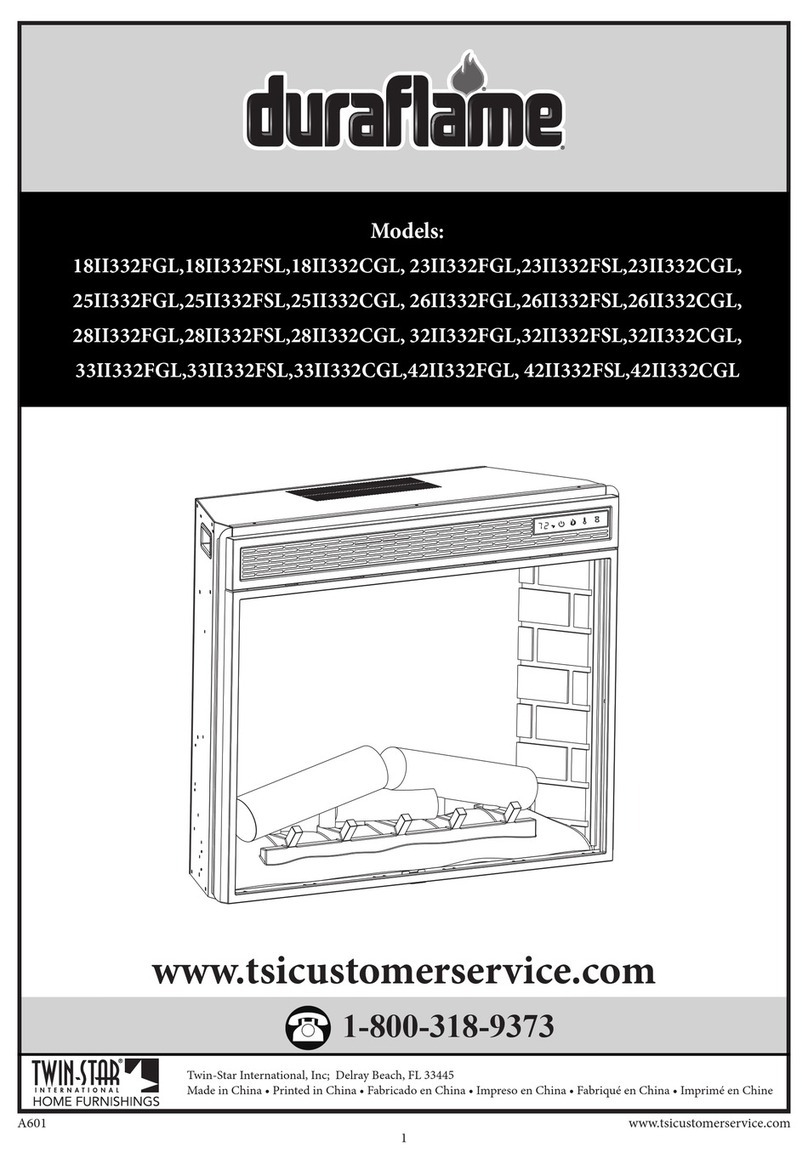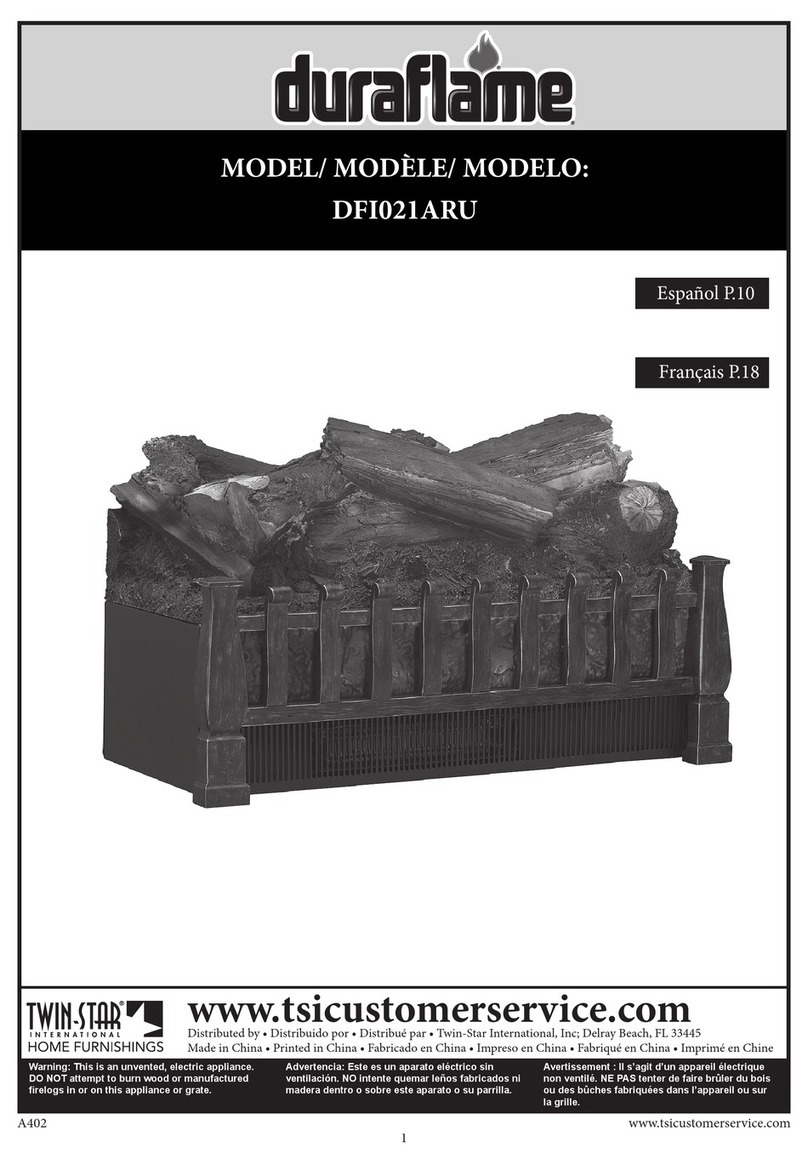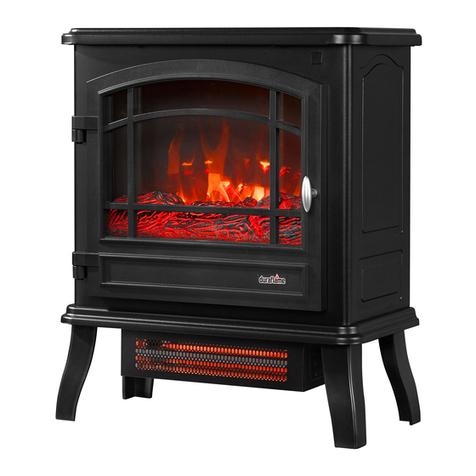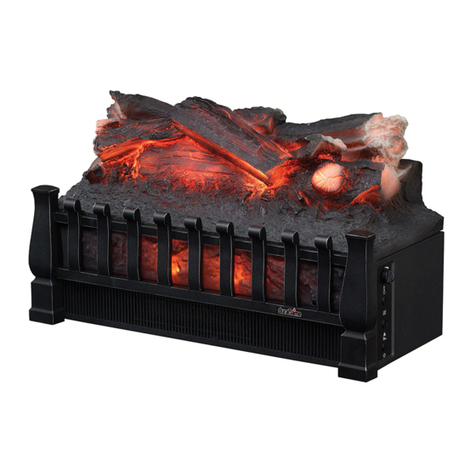
-8-
shown in Figure 2. The minimum clearances that the appliance originally required will be
adequate for this installation. You will need the two (2) ¼” x 1 ½” masonry screws provided for
this step. Place the burner / base in a solid-fuel-burning masonry replace, a UL127 factory-
built replace, or an approved (to ANSI Z21.92) ventless rebox, centered left to right on a level
surface. When it is positioned properly, mark the screw locations through the screw-down
holes in the back legs of the base (see Figure 1). If you are installing the appliance in a brick-
bottomed replace, mark the screw locations in a mortar joint between the bricks. Remove the
appliance, and drill holes at the marked locations using a 3/16” masonry drill bit. Replace the
appliance, and attach it to the replace oor using the masonry screws.
5. For this appliance to function properly, the burner / base must be stable and level. If the oor
of your replace is uneven or out of level, you must shim under the front grate legs or the rear
support of the burner / base. Shim only with metal washers or other non-ammable objects.
6. Set the front log in place (see Figure 4). The cavity of the log ts over the fuel canister tray. The
metal plate faces the rear of the appliance, and the log rests on the grate. Check to see that the
log is centered by opening the fuel canister door and looking into the fuel canister cavity. The
canister tray should be centered left to right in the opening with the gap between the canister
tray and the log wall on the left (Figure 5) is equal to the gap on the right (Figure 6). Also, push
the log as far back as possible. Make sure the gap between the canister tray and the front log
front wall is minimized. The gap between the canister tray and the metal wall on the back of the
front log (the part that holds the top door of the front log) should be maximized and the screws
on that metal part should not touch the canister tray (see Figure 13). Ensure that when the door
on the front log is opened and you look down the front edge, that the canister tray is touching
the inside wall of the front log and the back edge of the canister tray has a gap between it and
the back metal wall of the front log (see Figure 13). Place the back log on the support on the
back of the appliance so the hole in the right side of the bottom surface of the back log ts
onto the Back Log Pin (See Figure 7). Place the right logs on top of the front and rear logs (see
Figure 8) so that the holes in the bottom surface of the right log t over Right Log Pins #1 and
#2 that are on the front and back logs (see Figures 4 & 7). Place the left log on top of the front
and rear logs (see Figure 9) so that the holes in the bottom surface of the right log t over Right
Log Pins #1 and #2 that are on the front and back logs (see Figures 4 & 7).
7. Place the back middle log onto the pin in the center of the back log. The front part of the back
middle log should go to the left and forward of the back log and should rest behind the shield.
It should not rest on the shield or on the front log.
8. There is also a middle log that sits on the left side of the front log. Place this log on the pin
provided on the left center side of the front log. Make sure the front log door is not obstructed
by this log (See gure 10).
NOTE: When the log pile is properly positioned, the ames should be centered in the log pile and
should not come into contact with any of the logs. If there is contact, extinguish the appliance using
the built in snuffer device, allow the unit to cool for at least 30 minutes, and reposition the log pile
so that the ames are centered.
9. Next step is to install the battery into the igniter. The igniter is on the left side of the appliance
towards the front just under the front log (see Figure 1). The button and front cover of the igniter
twists off (see Figure 1). Twist the front off, install the battery and twist the front back on. Push
the button and you should hear the sparker creating the sparks. If you do not hear or see
the sparks, you either have a dead battery or you did not install the battery properly. If after
remedying both issues the sparker still does not create a spark, contact the installer, the store
where you purchased the product or Duraame, Inc.


